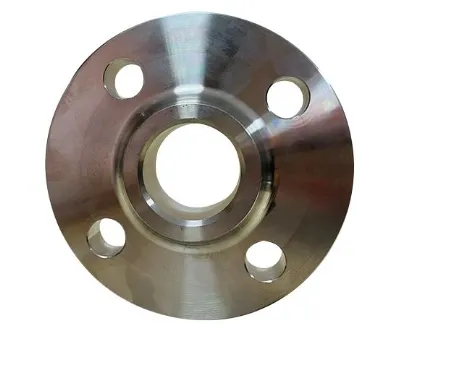-
Cangzhou Yulong Steel Co., Ltd.
-
Phone:
+86 13303177267 -
Email:
admin@ylsteelfittings.com
- English
- Arabic
- Italian
- Spanish
- Portuguese
- German
- kazakh
- Persian
- Greek
- French
- Russian
- Polish
- Thai
- Indonesian
- Vietnamese
- Zulu
- Korean
- Uzbek
- Hindi
- Serbian
- Malay
- Ukrainian
- Gujarati
- Haitian Creole
- hausa
- hawaiian
- Hebrew
- Miao
- Hungarian
- Icelandic
- igbo
- irish
- Japanese
- Javanese
- Kannada
- Khmer
- Rwandese
- Afrikaans
- Albanian
- Amharic
- Armenian
- Azerbaijani
- Basque
- Belarusian
- Bengali
- Bosnian
- Bulgarian
- Catalan
- Cebuano
- China
- China (Taiwan)
- Corsican
- Croatian
- Czech
- Danish
- Esperanto
- Estonian
- Finnish
- Frisian
- Galician
- Georgian
- Kurdish
- Kyrgyz
- Lao
- Latin
- Latvian
- Lithuanian
- Luxembourgish
- Macedonian
- Malgashi
- Malayalam
- Maltese
- Maori
- Marathi
- Mongolian
- Myanmar
- Nepali
- Norwegian
- Norwegian
- Occitan
- Pashto
- Dutch
- Punjabi
- Romanian
- Samoan
- Scottish Gaelic
- Sesotho
- Shona
- Sindhi
- Sinhala
- Slovak
- Slovenian
- Somali
- Sundanese
- Swahili
- Swedish
- Tagalog
- Tajik
- Tamil
- Tatar
- Telugu
- Turkish
- Turkmen
- Urdu
- Uighur
- Welsh
- Bantu
- Yiddish
- Yoruba

Nov . 10, 2024 21:50 Back to list
Understanding the Role of 90 Degree Elbows in Plumbing Systems and Their Applications
Understanding 90-Degree Elbows in Plumbing
When it comes to plumbing, efficiency and versatility are paramount. One of the essential components that contribute to the effectiveness of plumbing systems is the 90-degree elbow fitting. This plumbing fixture plays a critical role in redirecting the flow of water, allowing for changes in direction without compromising the system's integrity. In this article, we will delve into the importance, types, installation techniques, and considerations for using 90-degree elbows in plumbing.
Importance of 90-Degree Elbows
90-degree elbows are designed to change the direction of a pipe's flow, which is crucial in creating a functional plumbing system. Whether it’s for residential water supply lines or complex drainage systems, these fittings help traverse obstacles, fit within walls, and efficiently connect different pipe segments. Their primary function is to maintain the fluid flow while minimizing the potential for leaks or clogs.
In residential plumbing, 90-degree elbows are often utilized to navigate around corners in walls or foundations, providing a clean and organized layout. In commercial settings, they facilitate more complex systems that require multidirectional flow, ensuring the efficient transport of water and waste.
Types of 90-Degree Elbows
When selecting a 90-degree elbow, it’s essential to consider the type of material used in your plumbing system. The most common materials include
1. PVC (Polyvinyl Chloride) Ideal for cold water supply lines and drainage systems, PVC elbows are lightweight, resistant to chemicals, and easy to install. 2. CPVC (Chlorinated Polyvinyl Chloride) Similar to PVC but suitable for hot water applications, CPVC elbows are durable and resistant to heat.
3. Copper Often used in high-pressure applications, copper elbows offer longevity and are resistant to corrosion. However, they are generally more expensive.
4. Cast Iron Used mainly in larger municipal plumbing systems, cast iron elbows provide strength and durability.
5. Stainless Steel Although more costly, stainless steel elbows are corrosion-resistant and suited for high-end residential and commercial plumbing applications.
Installation Techniques
90 degree elbows in plumbing

Installing a 90-degree elbow fitting requires some basic tools and materials, including a pipe cutter, wrenches, and appropriate sealants or adhesives. Here are the general steps to install a 90-degree elbow
1. Plan the Layout Determine where the elbow is needed and map out the pipe layout to ensure accurate measurement.
2. Measure and Cut Using a pipe cutter, measure and cut the pipes to the specified length, ensuring a clean, straight cut.
3. Deburr the Edges Smooth the edges of the cut pipes to remove any sharp burrs that could compromise the seal.
4. Connect the Elbow Insert the end of the pipe into the elbow fitting. For PVC and CPVC, apply solvent cement for a secure bond. For copper, use solder and a torch to join the pipes securely.
5. Seal and Test After installation, check all connections for leaks. It’s crucial to allow sufficient curing time for adhesives used in plastic piping.
Considerations and Best Practices
When working with 90-degree elbows, several considerations ensure efficient plumbing
- Flow Direction When installing multiple elbows, consider how many turns are necessary; excessive turns can reduce water flow and increase the likelihood of clogs. - Size Compatibility Ensure that the elbow fitting matches the diameter of your pipes to maintain consistent flow and pressure.
- Local Codes and Regulations Familiarize yourself with local plumbing codes to ensure compliance, particularly in commercial plumbing systems where regulations may be more stringent.
- Professional Consultation In complex plumbing systems, consulting with a professional plumber can save time and resources, helping identify potential issues before installation.
In conclusion, 90-degree elbows are indispensable in the plumbing industry, ensuring that systems can navigate their environments efficiently while maintaining the integrity of water flow. By understanding their importance, types, installation techniques, and best practices, both amateur and seasoned plumbers can enhance the effectiveness of their plumbing systems. Whether you are working on a simple home project or a large-scale installation, making informed decisions about 90-degree elbows will lead to successful plumbing outcomes.
Latest news
-
ANSI 150P SS304 SO FLANGE
NewsFeb.14,2025
-
ASTM A333GR6 STEEL PIPE
NewsJan.20,2025
-
ANSI B16.5 WELDING NECK FLANGE
NewsJan.15,2026
-
ANSI B16.5 SLIP-ON FLANGE
NewsApr.19,2024
-
SABS 1123 FLANGE
NewsJan.15,2025
-
DIN86044 PLATE FLANGE
NewsApr.19,2024
-
DIN2527 BLIND FLANGE
NewsApr.12,2024
-
JIS B2311 Butt-Welding Fittings LR/SR 45°/90° /180°Seamless/Weld
NewsApr.23,2024











